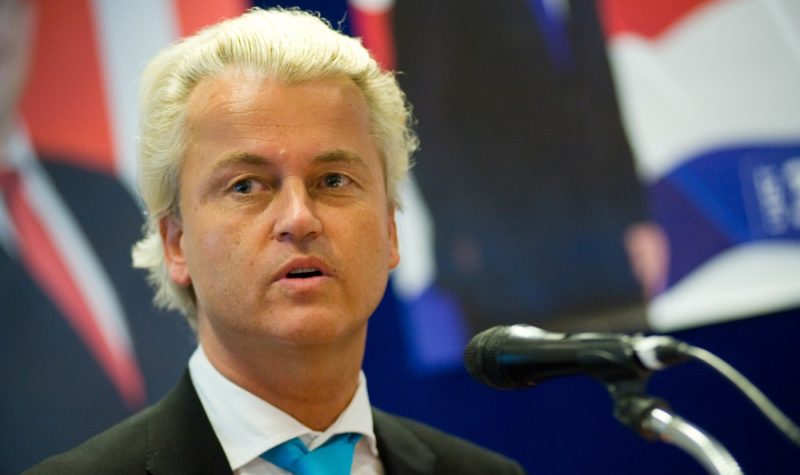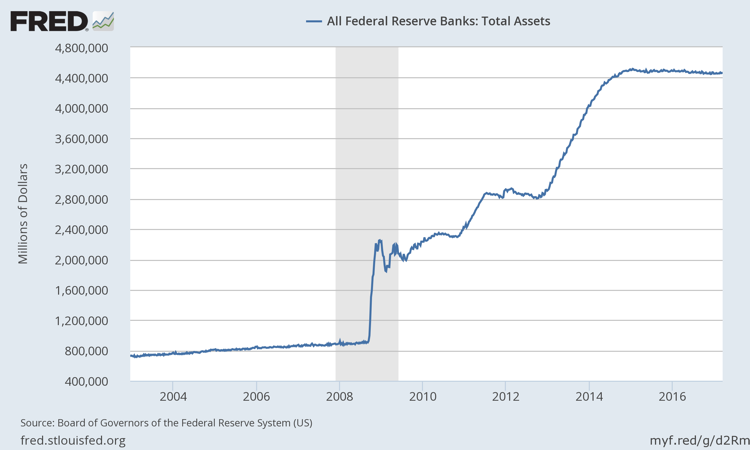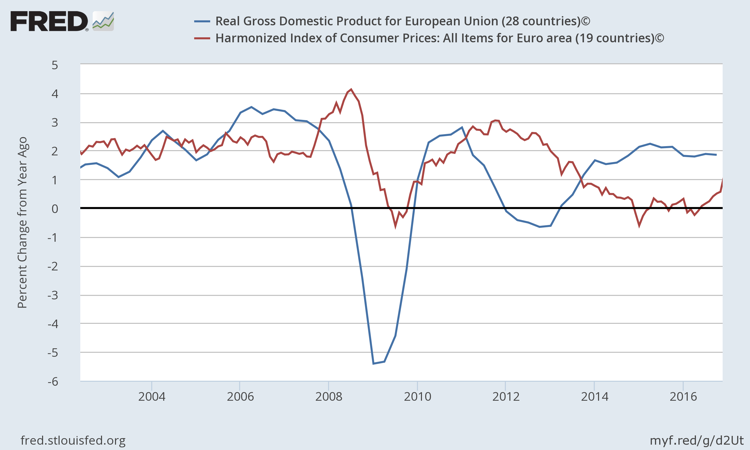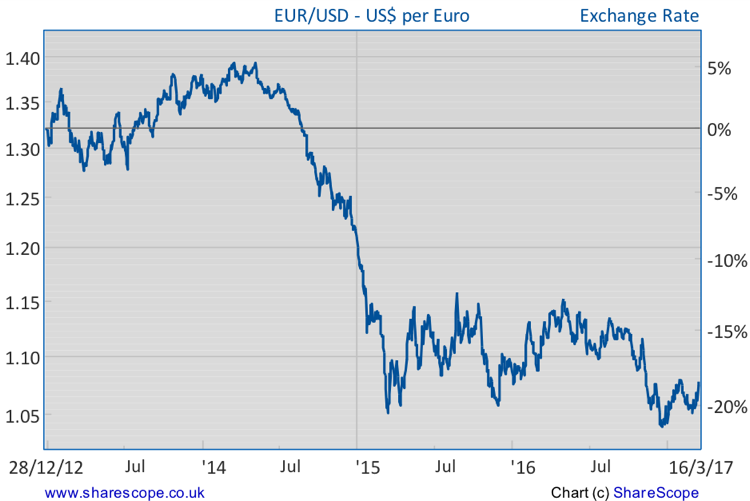Rates up, populism down

Last week we witnessed some interesting global developments that will pave the way forward: populism was somewhat defeated in the Netherlands, the FED hiked its key rate by another 25 basis points, an ECB official hinted at policy normalisation, and the BoE appeared more hawkish than many expected. After more than a decade of sluggish growth that has cost millions of jobs across the globe and fed into public discontent and the growth of populism, we are finally heading towards a decent economic expansion that may pull us back from the abyss.
The Brexit vote and Trump’s election are just two examples of what can happen when people are tired of getting promises with no practical implications. But, during the last few months, the anti-establishment sentiment has been losing momentum in Europe, as growth has finally materialised, the refugee problem has been sidelined and people are learning to live with terrorism threats.
There was a time last year when the eurozone (if not the whole EU) was following a dangerous path that could end in a full breakup of the Union. Deteriorating economic conditions fuelled public anger and boosted far-right parties across Europe. These populists blamed globalisation for the deteriorating economic outlook and called on a renewed nationalist sentiment that once dragged Europe into war. While sympathy for these nationalist parties has been weak since World War II, people saw them as a way of punishing the government for being unable to prevent the deterioration in living conditions.
But economic conditions are now improving. The austerity policy that marked the past few years, has been largely reined-in across Europe during the last year, which is now showing up in the form of employment growth, higher disposable incomes, and a general sense of relief for families across the continent. Growth is still mild but it is nevertheless shared across the whole Union (except for Greece). Deflation is no longer a problem, as prices are rising in a healthy way.
The sense of urgency in changing the current political landscape and, in some quarters, in leaving the eurozone and/or the EU has largely receded, which will likely be reflected in the upcoming elections as a reduction in the vote for nationalist parties. The first sign of it has been felt in the Netherlands, where the far-right nationalist Geert Wilders was defeated by the moderate Mark Rutte. In France, Marine Le Pen will suffer from it, and may well see her popularity diminish to the point of not even winning the first round. In the end, what matters the most are economic conditions. As soon as they improve, extreme parties lose their strength. Not even Twitter can save them…
While all this happens, Theresa May is expected to kick off the Brexit negotiations and central banks are positioning themselves for policy normalisation. After a decade of low to negative interest rates and large-scale asset purchases, we are finally seeing some good news for savers and pensioners. The dissenting voices in the ECB and BoE are growing louder and normalisation may become a reality in 2017. The European economic recovery is gathering pace while the FED is increasing rates very cautiously, feeding its policy statements with dovish words. For this reason, I believe that both the pound and the euro have a large upside potential against the dollar for the remainder of the year.
The FED remains Dovish
Last week the FED surprised the markets – but not because of the rate hike. Such a move, while being the second hike in a three-month period after a decade with no hikes, was largely expected. What surprised the market was the dovish comments that accompanied the policy move, which continue to reflect caution at a time when the US economy is clearly tilted to the upside. While the FOMC previously said it expected three hikes during 2017, the market was attributing a 25% chance of a fourth hike happening during the year, as a consequence of Trump’s fiscal shock.
I believe that both the pound and the euro have a large upside potential against the dollar for the remainder of the year.
But given the cautious approach taken by the committee last week, the chances of a fourth hike diminished significantly. The committee updated its projections regarding growth, inflation, and unemployment without significantly changing the previous levels. The FOMC expects growth to stall at 2.1% in both 2017 and 2018 to then decline to 1.9% in 2019; it expects the jobless rate to remain at 4.5% for the time being; and it expects inflation to stay at 2%.
The dot plot showed some upside changes, but the median rate is at 1.375% for 2017, 2.125% for 2018 and 3.0% in 2019 and beyond. For an economy near full employment, such projections are ultra low. In the long run, the rate advised by the Taylor rule is around 4%, not 3%. At the same time, the FED is delaying decisions regarding how to deal with its massive $4.5 trillion balance sheet, saying it will retain this balance until normalisation of official rates is “well under way”.
Unlike Goldman Sachs, which seems surprised by the outsized positive market reaction to the rate hike, I really am not, as we can hardly label the FED’s move as monetary tightening. Monetary conditions aren’t tighter just because a key rate is hiked. While certainly influenced by a rate hike, tightening is a situation where interest rates increase across maturities, the exchange rate rises and asset prices decline, which is certainly not the case now.
All in all, I suspect the FED will be caught by higher than desirable inflation levels and the dollar will lose ground against the pound and the euro during the year. The FOMC predictions seem very unrealistic and they largely ignore any effects stemming from a change in fiscal policy, which, good or bad, will occur. I’m keeping my holdings in VanEck Vectors Gold Miners ETF (LON:GDX) and its junior version VanEck Vectors Junior Gold Miners (LON:GDXJ), just in case central banks wake up too late.
Europe is filling the gap
Europe has been in trouble for the past several years. It still faces some tough hurdles as France and Germany go into Presidential elections where nationalist parties have gained traction. But the economy has also gained traction, which will ease the problem. In the UK, Brexit doesn’t seem to be as bad as first judged and the economy is doing pretty well for now. After everything is taken into account, Europe as a whole is better today than it was yesterday and is heading towards pre-crisis levels in terms of growth, employment and inflation. There’s still a long journey ahead, but those who believe the BoE and the ECB won’t move this year may be proved very wrong indeed.
There is no reason for the BoE to keep rates at 0.25%, nor for the ECB to keep a deposit rate at -0.40%. Ewald Nowotny, governor of the Austrian National Bank, gave hints the ECB is preparing to move soon, while Mario Draghi hinted there will be no extension to the current asset purchase programme. At this point, just holding the current €1.84 trillion in QE-related assets is enough to give the current policy an accommodative stance. The central bank may soon hike its deposit rate to -0.25% in order to restablish a +/- 25bps spread for its standing facilities rates, and eventually taper its asset purchase programme later in the year.
Because of this prospect, I retain a very bullish view on European banks. The main reason for this is not because I think the sector is flying high, but given all the negative projections that have daunted the sector for years, any small improvement comes as a large boost for equity prices. Back in August I made my case on the sector. The db x-trackers DJ STOXX 600 banks (LON:XS7R) has risen 33% since then, and I believe there’s still significant scope for the trend to continue. That said, the trend could be disrupted by a Marine Le Pen win in the French election, but that’s a risk I’m willing to take.
In the UK, the BoE kept its policy rate unchanged at 0.25% at its last MPC meeting; but unexpectedly, the vote went 8-1, as one committee member dissented, arguing for a hike. At the same time, other policy officials said they would change their vote if inflation keeps rising and political risks regarding Brexit disappear. That is a very likely scenario, which may bring back a 0.5% rate sooner than expected. Inflation in the UK is now at 1.8% and is expected to surpass 2% very soon. While Mark Carney first admitted that some overshoot could be allowed by the committee, more recent comments pointed in a different direction. With global economic conditions now tilted to the upside and Brexit risks scaled down, there may not be a reason to allow any overshoot at all.
With all this in mind, investors should be prepared for the ECB and BoE to close the policy divergence with the FED, rather than allowing it to grow, which may boost both the euro and the pound.
The main risks in Europe are Brexit and elections. The Brexit problem is for now under control. Regarding elections, we could say that things are improving at a rapid pace. With the far-right eschewed in the Netherlands, there is a chance that Marine Le Pen won’t win the first round in the French election, which would count as a major defeat and would boost the euro. That chance is growing…



So things are being normalised ? i think not, there is still massive debt in the uk and Europe. Dutcher bank is still out on a limb trying to bolster its core capital.
The banks in Spain, Italy, Portugal and Greece still are on the sick list, with these countries also have a massive borrowing from the EEC central bank.
Today i read about the flight of capital out of Europe, flowing into Germany, why are the rich are getting scared? and moving capital into a safe haven? do they know something you or we do not know or understand.
Migration could be down, but who is collecting the figures? There is war and starvation in somalia and other African states. Syria is a bomb out mess still with more people on the move. Turkey have 2 million displaced persons all looking for a brighter future. Europe is under threat by Turkey to start moving people on.
Yet you say the populist movement is dead and dying in Europe i think the flames might have been damp down, but the ashes are still glowing. If you judge one Dutch election, as the death of the far right i think you could be badly mistaken.
Nice to read a more balanced view on the prospects for the EU. It makes a change from the usual rabid anti EU Brexiteers who feature regularly on these pages.